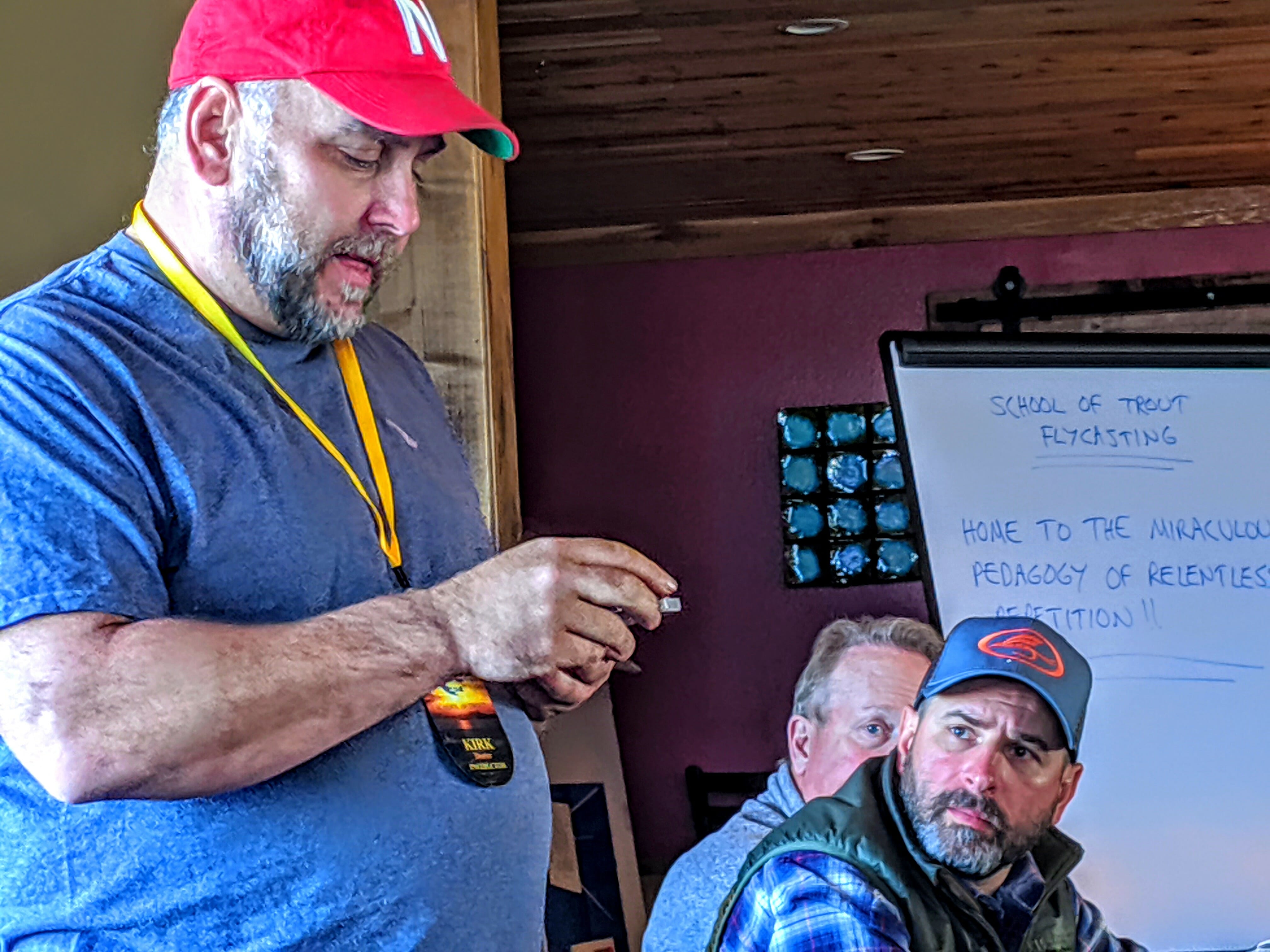‘Tis the season. Over the weekend, my buddy and fellow TU-er Kirk Deeter and I faced off in fantasy football. We’re both underachieving this year–it seems we both have the bad fortune to play the highest-scoring opponents in the league every week this season, so we both find ourselves in the middle of the standings, despite scoring well almost every week.
Call it the variable. The constant unknown, if you will.
Fortunately for me, though, Dak Prescott had a great second half against Green Bay on Sunday, and, while the Cowboys lost, my fantasy team eked out a win over Deeter.
Let the gloating begin.
Today, at a presentation at the School of Trout in Island Park, Idaho, Kirk, obviously smarting from the smackdown, likened preparing your fly box for a day of fishing to setting your fantasy football team’s lineup for the coming weekend. There are things you know, and then there are the variables. Those pesky unknowns. And, when you’re preparing to fish a certain river, you go with what you know, and do your best to prepare for what you don’t.
Island Park is an ancient caldera. It’s bisected by the fabled Henry’s Fork, and this time of year, it’s most dependable hatch is the Blue-winged Olive. The fantasy fly lineup for the Henry’s Fork in October would certainly feature BWOs and BWO variants in all the key positions.
But there would be some wild cards. Because there are always variables.
Take the weather at this year’s SOT. On Tuesday in eastern Idaho, temperatures were in the mid-60s. By Wednesday morning, it was snowing sideways, and overnight Wednesday into Thursday, temperatures dived into the single digits. By the time SOT students convened Thursday morning for breakfast, it was a frosty 7 degrees outside–it wasn’t dry-fly weather.
But, some years, grasshopper persist on the plateau well into October, and on a warm fall day, a hungry trout just might move out of a feeding lane for one last shot at a big bite of protein.
So flies for those variables could fall into the fantasy football equivalent of a “flex” player–a fly that might not be in the BWO family, but one that might be able to pull tight-lipped trout off the bottom of the Box Canyon on a day most would simply forego fishing entirely. Think something heavy that might just coax a bite, like a Purple Prince Nymph or a bead-head olive Woolly Bugger.
So, this might be Deeter’s fantasy fly lineup for the Henry’s Fork, including those “flex” flies for the unexpected variables that, whether we like them or not, always seem to make an appearance:
- Quarterback: Blue-winged Olive dun, size 20
- Running back: Parachute Adams, size 18
- Running back: BWO soft-hackle, size 18
- Wide receiver: BWO emerger, size 18
- Wide receiver: Green Copper John, size 18
- Tight end: Olive Woolly Bugger, size 8
- Flex: Purple Prince Nymph, size 12
- Flex: Dave’s Hopper, size 10
These are fairly solid go-to flies for the Henry’s Fork in the fall. You’ve got the predominant hatch (BWO), a dependable streamer for big browns (the Bugger), a deep-riding nymph (the Prince) that you could drift under an indicator or, even better, under the Dave’s Hopper. With some dexterity, a double-nymph rig featuring the Prince and the Copper John could be the ticket to subsurface success.
It’s a good fantasy lineup. Now, of course, you can’t tell what kind of game the fish are going to bring. And that, like fantasy football, is what makes it interesting.
The message. Prepare for what you know. Expect to see a penalty flag or two that might change the course of the game. And enjoy the day on the water, win or lose.



